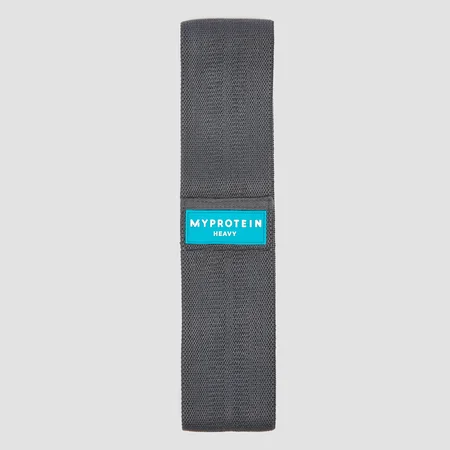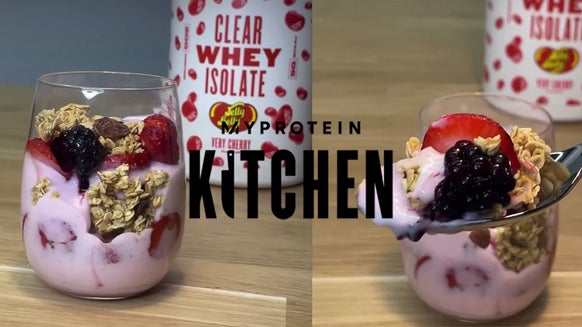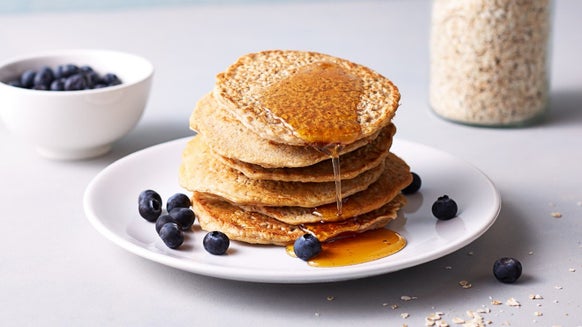14 Resistance Band Workouts for Beginners

Who says you need weights to work out? Resistance bands are a great tool that you can use at home or at the gym as an alternative to weights. Not sure what they are, how to use them or what they’re good for? Don’t worry, here’s everything you need to know.
What are resistance bands?
Resistance bands are stretchy, lightweight bands that come in a variety of thicknesses and lengths, and are used as a tool for training and rehabilitation to work out different areas of the body.
There are a number of different styles of band depending on what you plan to use them for, including small, rehabilitation bands, thicker figure-eight bands for upper-body workouts, and looped bands for lower-body workouts.
Do resistance band workouts really work?
Yes — resistance bands are great for building strength and muscle. A 2019 study found that resistance band training can produce similar strength gains to conventional resistance training.1
As with all equipment, it’s important they are used effectively and correctly.
What is resistance training?
Resistance training is the act of lifting (pulling or pushing) the body against some form of resistance. It can be done using resistance bands, conventional weights or even bodyweight movements, and is usually done to build muscle size, strength or endurance.
Are resistance bands good for weight loss?
To lose weight, the body needs to burn more calories than it takes in. Bodies with greater muscle mass will typically burn more calories than those with less. Resistance bands can be a great way to build muscle, which would in turn lead to more calories burnt.
Performing 3-4 resistance band workouts a week can be a great way to build muscle and burn fat. By hitting the right reps and sets, you can lose weight effectively.

Are resistance bands good for building muscle?
Muscles are built by overloading through training to induce microtears, which causes them to grow in size. Resistance training is the most effective way of building muscle, and resistance bands can play a key role in it.
Working in the same way as traditional weights like dumbbells, resistance bands cause the muscles to have to work hard against resistance, leading to increased strength, size, or endurance over a period of time.
Can resistance bands help tone your stomach?
Spot reduction of fat is impossible — you can’t target fat loss. But resistance bands can be a great way to increase muscle mass and burn calories, which could lead to more-visible abs.
How long does it take to see results from working out with a resistance band?
As with any training programme, you will need to progressively overload to see results. This can be done by increasing band thickness or size, or manipulating reps and sets. When this is done regularly, most people begin to see noticeable differences within 6-8 weeks.
How many times a week should you do resistance band training?
When starting resistance band training, aim for around three 30-60-minute sessions a week. Make these 3 full-body workouts or create an equal upper and lower split with around 4 sessions per week.
Which resistance band should you use as a beginner?
It can be challenging to decide what bands to use when you’re a beginner. The first thing to consider is the area of the body you’re training. For legs, bands will need to be thicker or higher resistance than bands for the upper body.
Think about whether a loop band or a tube-based band is better for the movement. Once you know the style, picking the level of resistance is key. You want to complete the movement holding good form, but you also want to feel resistance. As with standard weight training, complete the reps with good form but start to feel a burn in the last 2 reps.
14 Resistance Band Exercises for Beginners
Ready to try out some resistance band exercises? We’ve pulled together some exercises for you to try:
1. Banded Front Squat
Squats are a must in any programme and the go-to exercise for serious leg gains.
Using a long resistance band, loop one end around the bottom of both feet, shoulder-width apart on the floor. Hold the band with both hands in front of your shoulders with an overhand grip and drive your elbows forward, raising them to around shoulder height. Keeping your chest lifted and eyes straight ahead, push the hips back and down by bending at the knees. Continue until your upper legs are parallel to the floor. Hold for a second, then slowly return to the starting position.
2. Lateral Walk
Also known as monster walks or side steps, these are great for working on your glutes.
Using a small resistance band, loop it around both ankles and stand with your feet shoulder-width apart, making sure the band is taut. Soften the knees by bending slightly and sit into a half squat. Keeping your chest lifted and eyes straight ahead, start by stepping one foot out to the side until the band is at full stretch. Hold for a second before following with the other foot. Keep your hips level and your core engaged.
3. Leg Abduction
Great for rehabilitation or building strength in the hip abductors.
Loop a small resistance band above your knees and stand sideways with your right hand against a wall. Keep your core engaged and head lifted, and start the motion by driving the left leg out sideways as far as you can. Pause and hold at the top of the movement for 1-2 seconds, then switch to the other side.
4. Banded Lateral Step-Out Squat
A great variation to regular squats.
Place a small resistance band below your knees and stand with your feet shoulder width apart, making sure the band is taut. Soften the knees and take a big step out with the right leg. Once your foot is planted, squat down. Keeping your chest lifted and eyes straight ahead, start by pushing the hips back and down by bending at the knees. Continue until your upper legs are parallel to the floor. Hold for a second, then slowly return to the starting position. Step the left leg in and repeat.
5. Side Plank High Pull
A strong core is vital for optimal movements, both in training and day-to-day life.
Place a small resistance band loop around both ankles and stand with your feet shoulder-width apart, making sure the band is taut. Soften the knees by bending slightly and sitting into a half squat. Keeping your chest lifted and eyes straight ahead, start by stepping one foot out to the side until the band is at full stretch. Hold for a second before following with the other foot. Keep your hips level and your core engaged. Get down onto the floor and into the plank position, looping the band around the hand and inside of the right thumb. From the plank position, hold the band in your left hand and then rotate your body into a side plank while pulling the band up. Keep your core engaged and make sure your hips are flat. Repeat on the other side.
6. Lateral Raise
Building a strong upper body is a must for anyone serious about training.
Using a long band, step your feet into it with both the left and right close together. Hold the band in both hands with your arms extended at your sides. Soften the knees, engage your core, and avoid arching your back. Start the movement by lifting your hands up towards your shoulders, keeping your arms locked out straight. Once at shoulder height, hold for a second, and then slowly lower down.

7. Deadlift
The king of compound movements, deadlifts should be a staple in all programmes.
Place a long resistance band on the floor and step with both feet on top of the middle. Hold each end of the band with your hands and stand with your feet shoulder-width apart. Bend your knees and send your hips a few inches backward, keeping your chest up. Hinge forward, sending your hips backwards between 30 and 45-degrees. Power your hips and glutes forward to stand up straight. Keep your knees soft, squeeze your glutes and keep your posterior chain tight.
8. Banded Glute Bridge with Hip Abduction
Build strong and powerful glutes as well as overall lower-body strength.
Lie on your back and place a small resistance band between your knees. Put your feet flat on the floor as close to your glutes as possible, around shoulder-width apart. Start the movement by pushing your hips towards the ceiling and driving through the feet. While moving, keep pressing your knees outward against the band. Hold at the top and then slowly lower your hips.
9. Standing Banded Triceps Extension
Building stronger arms helps create a well-rounded strong foundation.
Attach a resistance band to a fixed point on a wall or support. Hold the band with a neutral grip and lean forward slightly by hinging at the hips. Start the movement by extending the elbows downwards and engaging the triceps. Once the arm is straight and locked out, hold for 1-2 seconds, and then return. Keep your feet pushing out against the band.
10. Bicycle Crunch
A strong core is the foundation of a strong body.
Place a small resistance band around both feet and lie on your back on the floor. Engage your core and lift your shoulders and legs up and off the floor, hands by the side of your head, with your legs extended. Pull your left knee into your chest and your right elbow across to meet your knee, and then extend back. Repeat on the other side. Keep your feet pushing out against the band.
11. Plank to Bear Crawl
This full-body move will have you working hard from top to toe.
Place a small resistance band around both legs just below the knees and get into a press-up position. Push your legs out against the bands, and engage your core, making sure your shoulders are over the wrists. Slowly bend one knee forward until your shin is parallel to the floor, followed by the next leg. Once in the bear hold, slowly move forward by moving the opposite arm and leg forward at the same time. Take around 4 steps before returning to plank hold for a few seconds, then proceed back to bear crawl.
12. Reverse Lunge
A great lower-body movement for building strength.
Stand with your feet hip-width apart and a long resistance band looped under them. Hold the looped end of the bands in your hands, with your shoulders pulled back and core engaged. Take a large step back with one foot, lowering your back knee down toward the floor. Stop when your back knee is just above the ground. Hands should be holding onto the looped ends of the bands. Chest upright and take a large step back with the opposite foot. Drive through your front heel and return to a standing position. Repeat.
13. Plank Row
A strong core is the foundation of a strong body.
Loop a long resistance band around a fixed object low to the ground. Lower yourself down into a high plank position with your feet wider than normal and your shoulders over your wrists. Grab the band with your right arm and make sure it’s fully extended before you start the movement. If you need to move yourself further away, do so. Pull the band to your shoulder and slowly return to the starting position. Repeat on the other side.
14. Chest Press
Building a strong chest is a foundation of upper-body movements.
Lie on your back with a long resistance band placed under your shoulders. Hold both handles of the band, with your upper arms in contact with the floor. Push your hands out against the band, extending both arms until they’re straight and pulling the band up with them. Lower your hands back down to the starting position and repeat.
Take Home Message
Resistance bands are a great tool if you’re looking to increase your strength and put on some muscle without having to do conventional gym training. Legs, arms, chest — you can target them all with the right set of bands. Remember to maintain proper form, stay in control, and increase the resistance gradually as you progress and get stronger.







